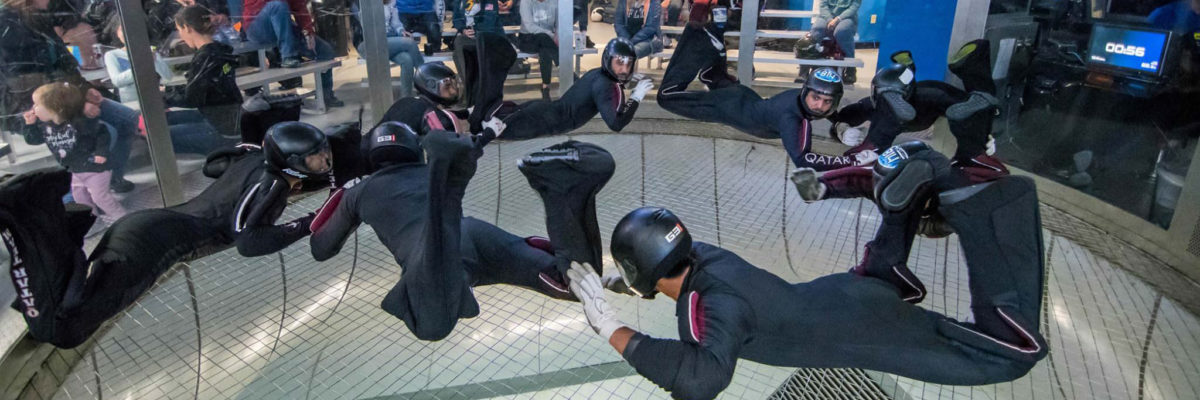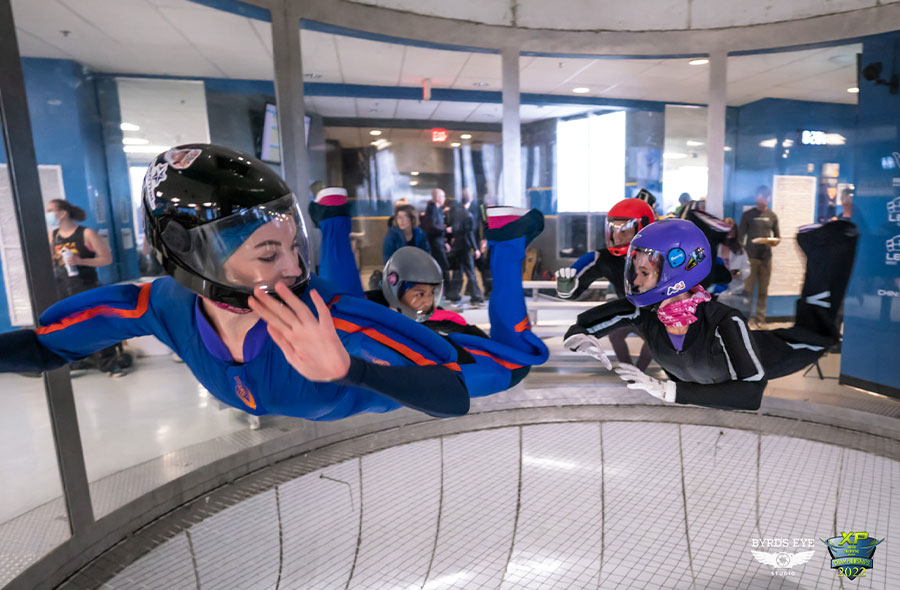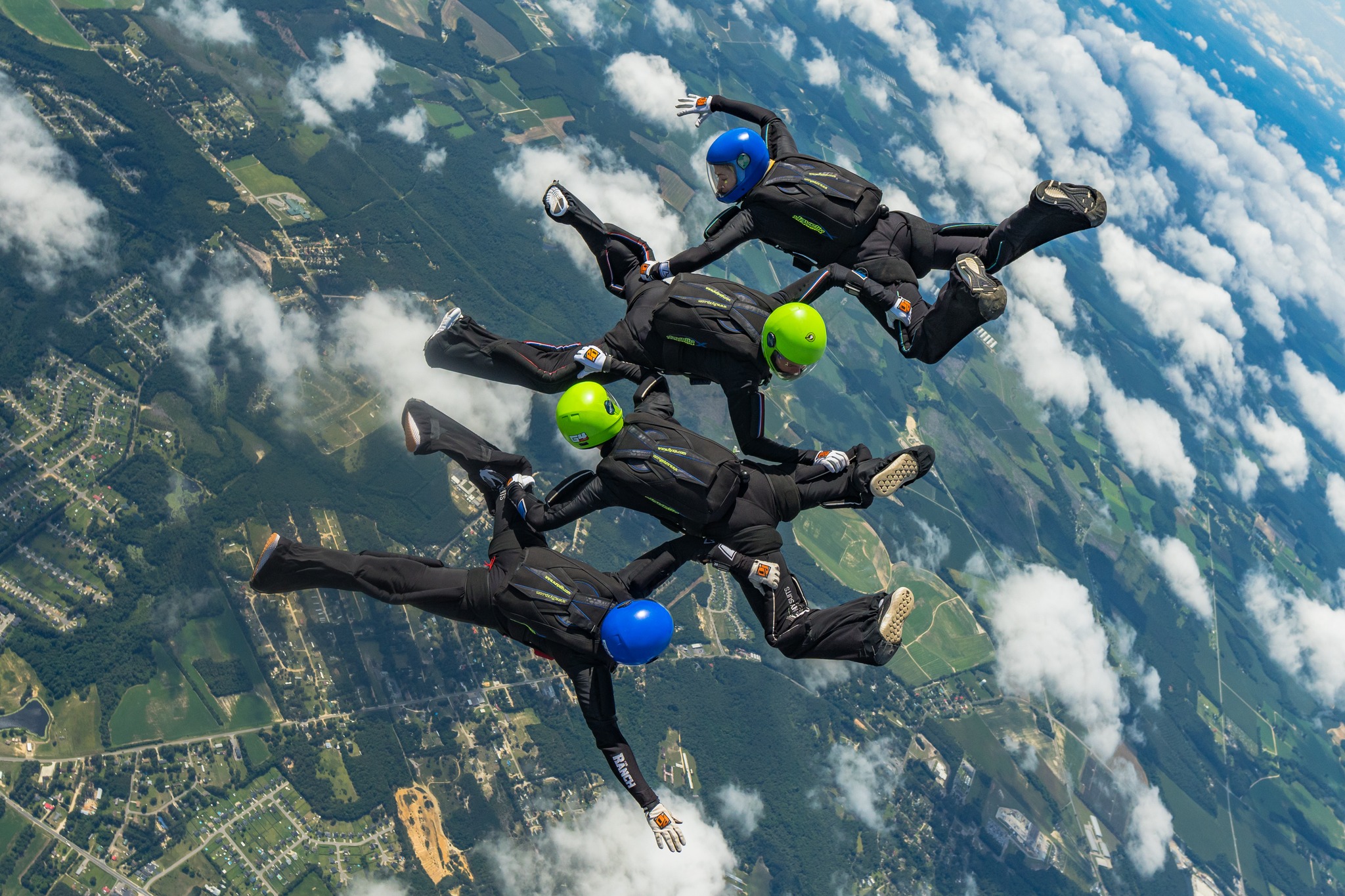
Why Get Started With Skydiving License Training in the Wind Tunnel
Sunday, September 22, 2024
- Team XP
- 9/22/24
- 0
- Indoor Skydiving, Skydiving
For those looking to take on the journey of earning a skydiving license, the idea of combining traditional jumps with wind tunnel training is becoming increasingly popular. Whether you’re a newcomer aiming to complete your Accelerated Freefall (AFF) training or looking to build your freefall skills, wind tunnels offer numerous benefits. Let’s see how wind tunnel training is a smart choice when you’re just starting out on your skydiving license journey.
Does the Wind Tunnel Help Skydiving?
Yes! The wind tunnel is a wonderful tool used for skydiving progression. It provides a controlled, consistent environment where you can focus on mastering freefall techniques without the distractions and added pressure associated with jumping from an aircraft.
In fact, our one-of-a-kind Paraclete Student Program (PSP) actually includes 15 minutes of wind tunnel training before starting your AFF skydiving training! One of our certified tunnel instructors will come in with you during wind tunnel training for skydiving. They’ll help you fly stable on your belly, and even practice some parachute deployment touches. The real-time feedback from instructors allows for immediate correction of mistakes, reducing the likelihood of developing bad habits.

Here’s how the wind tunnel helps with skydiving:
1. Fast-Track Your Skydiving Skills
Wind tunnel training is an excellent way to accelerate learning, particularly for those working towards a skydiving license. Traditional skydiving jumps often involve multiple variables like altitude changes, parachute deployment, and landing, which can slow down the freefall learning process.
In contrast, the wind tunnel allows you to focus solely on mastering freefall skills without these distractions. The stable and consistent environment of the tunnel creates an ideal setting for practicing freefall techniques, enabling students to acquire skills more quickly and build a strong foundation before transitioning to the skies.
Skydiving out of an airplane means immediately jumping into your terminal velocity – about 120 mph – whereas, in the wind tunnel, instructors are able to manipulate the wind speed, making it easier for you to learn the skills necessary to fly at your terminal velocity.
Unlike traditional jumps, which offer limited freefall time – about 45 seconds – the tunnel provides extended freefall sessions, giving you more time to build those skills. For example, the 15 minutes of tunnel time that students receive at the beginning of their AFF training is equivalent to about 15 skydives!
This additional time allows you to repeat specific maneuvers multiple times with a dedicated, hands-on instructor nearby to help build muscle memory and solidify body control faster than they would through skydives alone.
Which brings us to our next point…
2. Save Money While Mastering Freefall Techniques
Earning a skydiving A license involves a hefty financial investment, but wind tunnel training offers more of a budget-friendly way to develop essential freefall skills.
Traditional skydives can be expensive, including the investment of time required – the plane ride, acquiring gear, waiting for your parachute to be packed, weather delays, etc. Wind tunnel sessions are typically more affordable, without the use of parachutes or other skydiving equipment, which reduces the financial and physical burden.
3. Learn New Skills in a Safe, Controlled Environment
One of the primary concerns for new students is safety. This is where wind tunnel training can make a significant difference when it comes to risk mitigation. While flying in a wind tunnel is not risk-free, per se, it does eliminate altitude-related risks, improper exits, unstable parachute deployments, and hard landings. These are critical skills in skydiving training, but mastering basic freefall techniques first makes the transition to real jumps much safer.
4. Train Year-Round: Weather Resistant Wind Tunnels
For those with tight schedules – who doesn’t have a tight schedule? – wind tunnels can provide a more flexible alternative to traditional freefall training. One of the biggest benefits of wind tunnel training is that it does not depend on weather conditions. You can train year-round, without the need to wait for a weather hold to lift or cancel sessions altogether. This weather independence allows for consistent training, ensuring steady progress while on your freefall journey.
Additionally, wind tunnels often offer more flexible scheduling than dropzones, which may only operate on weekends or until sunset. This makes it much easier for you to fit tunnel time into your life, helping you stay on track with your training.

5. Build Confidence and Take it to the Skies
Building confidence is crucial not only for success in skydiving but for safety. Wind tunnel training helps foster this confidence before you make the leap to the real jumps. By empowering you to master freefall techniques in the tunnel, you often feel more confident when you shift to the real deal. Knowing that you’ve already practiced and refined your body position reduces anxiety and helps you perform better during actual jumps.
Is a Wind Tunnel Worth it?
For students pursuing a skydiving license or for anyone who is looking to improve their freefall skills, the wind tunnel offers a highly effective way to improve those skills in a controlled environment. Is a wind tunnel worth it? Absolutely. Not only is it a cost-effective way to build your confidence and improve your technique, it is a safer and faster way to do it.
Whether you’re training at Paraclete XP or another facility, the benefits of wind tunnel training are undeniable. Here at Paraclete XP SkyVenture, we’ve got the best of both worlds – our dropzone, Skydive Paraclete XP, is just 15 minutes from the tunnel!
Ready to up your flying skills? Book your tunnel time with us at Paraclete XP SkyVenture and watch your skills take flight. Don’t forget to ask about coaching!
Copyright © 2025, Paraclete XP Indoor Skydiving, All Rights Reserved.
DropZone Web Design & Marketing by Beyond Marketing, LLC
